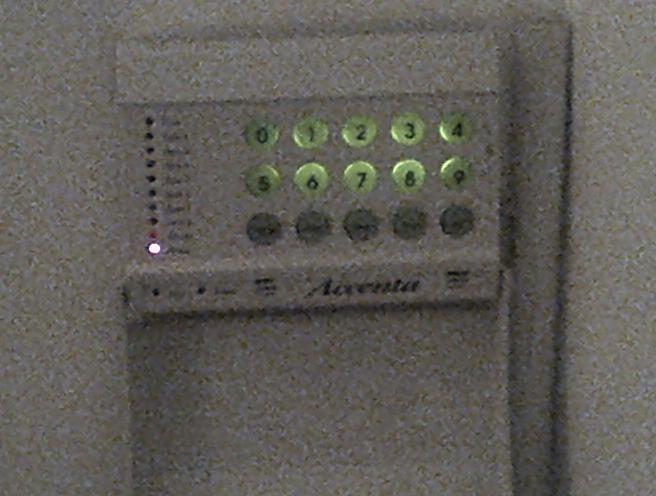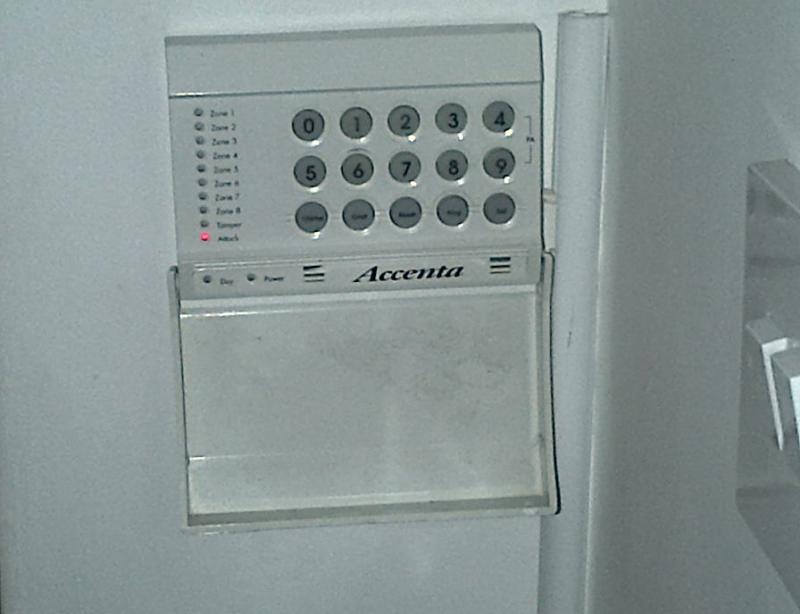This morning our alarm system went off for no apparent reason and so I came downstairs to disarm it using remote keypad. However the rkp was completely dead, other than number keys illuminated. I also noticed that the internal sounder wasn't emitting its usual racket which I thought was rather odd. On checking the main consumer unit I noticed that the RCD for the protected circuits had tripped, not the MCB for the alarm control panel, so I reset it which stopped the bell ringing (peace and quiet, for a while!).
Time to open up the control panel and check the battery terminals etc.
Note: The battery was only replaced in July 2011 (Online 12v 2.2Ah).
On removing and then reconnecting the battery the bell box went berserk and so I went to the rkp to reset it but keypad was dead to all normal user codes and just squeaked like it was half dead.
With battery connected = inoperable squeaky remote keypad and loud alarm bell
Without battery connected = dead keypad and quieter bell
Checked battery with multimeter (not connected to panel) and reads 8v.
So I left the battery out and reset the the memory by wiring across terminals 19 and 27 to reset NVM which stopped alarm conditions and bell sounding, put back the control panel cover and started to think things through, which is why I'm now asking for some assistance.
Could a battery that's only 1.5 years old be faulty or am I into a bigger job? Any help really appreciated as well and truly broke after Christmas meaning hopefully another diy job.
P.S. I should also mention that I changed to a Texecom Odyssey bell box also 4 years ago as this was faulty due to corroded terminals. All has worked well since and no changes to any electrics on this circuit.
Time to open up the control panel and check the battery terminals etc.
Note: The battery was only replaced in July 2011 (Online 12v 2.2Ah).
On removing and then reconnecting the battery the bell box went berserk and so I went to the rkp to reset it but keypad was dead to all normal user codes and just squeaked like it was half dead.
With battery connected = inoperable squeaky remote keypad and loud alarm bell
Without battery connected = dead keypad and quieter bell
Checked battery with multimeter (not connected to panel) and reads 8v.
So I left the battery out and reset the the memory by wiring across terminals 19 and 27 to reset NVM which stopped alarm conditions and bell sounding, put back the control panel cover and started to think things through, which is why I'm now asking for some assistance.
Could a battery that's only 1.5 years old be faulty or am I into a bigger job? Any help really appreciated as well and truly broke after Christmas meaning hopefully another diy job.
P.S. I should also mention that I changed to a Texecom Odyssey bell box also 4 years ago as this was faulty due to corroded terminals. All has worked well since and no changes to any electrics on this circuit.



